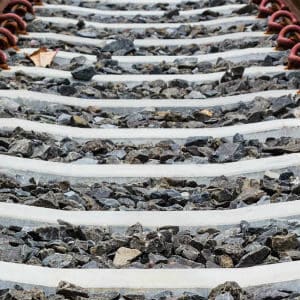Total asset management is key to a successful railway network, argues Gary Webb from rail drainage specialist UKDN Waterflow. The recent Office of Rail Regulations health and safety assessment of Network Rail identified that a number of improvements were needed in the maintenance of the railway infrastructure, earthworks, structures and workforce safety, all areas where UKDN Waterflow have innovatively proven expertise and experience.
The assessment identified a number of key areas for improvement, and Webb firmly believes that a totex approach will enable Network Rail to effectively meet the challenges, using innovative asset mapping, management and inform capex and opex spend.
The key messages in the assessment included
•the management of track, structures, drainage and vegetation has improved, but more is needed to continually ensure safety. Some asset registers are incomplete and this can lead to inaccurate estimates of the necessary maintenance work and an over-reliance on reactive maintenance.
•Network Rail has insufficient resource to deliver all the maintenance work it planned in track and off-track assets, such as fencing and vegetation management, which can create the potential for an increase in asset failures and risk of train accidents. Although the dataset is small, the ORR saw increases in the number of rail breaks and track geometry faults on some routes;
UKDN Waterflow’s total asset maintenance programmes have been designed to take a far reaching view of any network from an informed position.
There was a close correlation between high rainfall and landslips in 2012-13. The quality of the drainage can affect the stability of earthworks.
Webb commented: “According to the ORR Network Rail’s commitment to complete the asset register for drainage still requires work, and we see that as a core part of any asset management programme. We’ve proven, with our work on asset mapping and management for Thames Water’s Sewer Drainage Area Catchment (SDAC) programme across London, that you can proactively get on the front foot and influence opex, capex and totex positively, effectively balancing planned and reactive maintenance to prevent faults from occurring.
Real-time asset mapping and analysis helps reduce potential hotspots from occurring, causing unforeseen network problems that then require a reactive, disruptive response.“
The OOR report indicated that poor fencing, drainage and vegetation can increase potential train accident risks, citing poor drainage as something that can affect track quality, and overgrown vegetation affecting how well train drivers can see signals. The report also indicated that Network Rail does not always have the right information to plan its work effectively, including complete asset registers.
The ORR found that Network Rails’ ‘find and fix’ approach to track inspection and reactive maintenance was not the most reliable way to ensure a safe and resilient track and infrastructure, suggesting that a proactive ‘predict and prevent’ approach to planned maintenance is a better way to control underlying train accident precursor risks.
UKDN Waterflow are well placed to help, providing project and programme management capability to help Network Rail achieve the improvements and a proactive approach to asset management will be the key.

